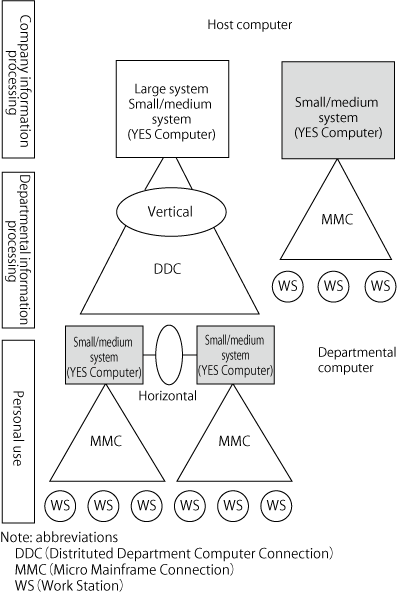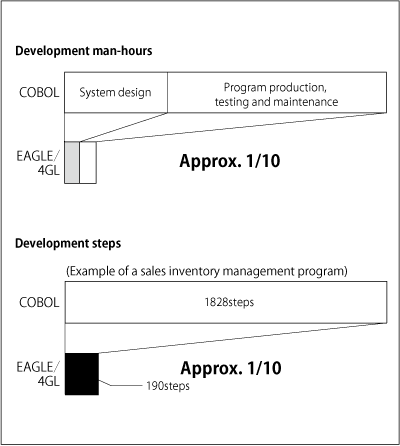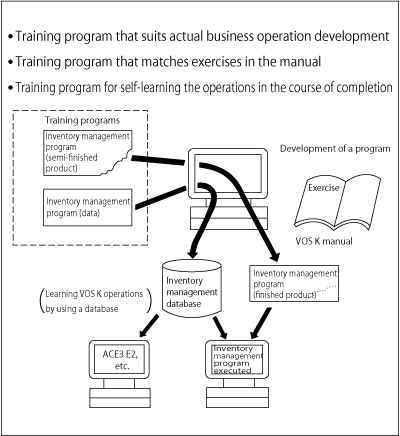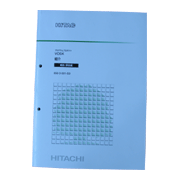VOS K was a small/medium OS for M-620, M-630 and M-640. Design of the OS placed top priority on ease of use and high speed in order to enable utilization by people in practical business divisions who had no professional computer know-how. Equipped with a relational database as one of its basic functions, the OS adopted a virtual data space control method to achieve high speed. It provided the 4th generation language EAGLE/4GL, which achieved program productivity 10 times that of COBOL. In addition, it realized Distributed Department Computer Connection (DDC) that enabled the user to use VOS on the host to develop, manage and operate VOS K.
Hitachi announced VOS K in July 1988 and started shipping it in December 1988.
In order to provide an easy-to-use, high-performance operating system that enabled a network to be easily built, VOS K had the following functions incorporated into the basic structure of the system.
The previous system used a relational database in conjunction with various file functions, such as an indexed file and a structural database. Therefore, it was important for the user to decide which of these file functions to select according to the business operation, and such decision-making placed an extra burden on the user. Furthermore, if the file function were different, the user had to manage the same data in separate files. To avoid this problem, the file functions of VOS K were unified only for the relational database in order to achieve multiple functions and ease of use.
In many cases, when operating or executing a business task on a computer system, interactive, man-machine methods are advantageous in terms of ease of use. With VOS K, interactive processing was positioned as the basic environment for job execution, and the batch-processing environment was also designed to be an interactive processing environment. This made it possible to issue instructions to the system using a single command language.
By using an extended HNA as the network architecture, Hitachi aimed at supporting various communication networks, international standards and various use applications of networks, and realized a network system that corresponded to a broad range of use applications, from a local network to a wide-area network.
In addition to being positioned as a conventional "OS for small-scale host computers," VOS K served as an "OS for departmental computers," which were being installed in various company departments. In each case, the OS was required to be user-friendly, and to facilitate use even by people engaged in practical business operations.
In developing VOS K, Hitachi aimed at realizing a "YES" Computer (Y: do it Yourself; E: Easy to use; S: high Speed),” which could be easily used even by individuals working on practical business operations who had no computer know-how.
Figure 1 shows how VOS K was positioned in terms of its role as a YES Computer.






